Coding Projects
May 2003 - "Joenopoly." High School senior project, Central Cambria School District. Joenopoly is a spin-off of the popular board
game, Monopoly. Built using Visual Basic.
Nov.2005 - "Murdock Dungeon". Class project for University of Pittsburgh at Johnstown. This dungeon game was a very small
role-playing game in which the player can roam around in a dungeon,
collecting key items and fighting against enemies in a traditional
turn-based menu-styled mode of combat. Built in Ada, plays in a terminal window.
May 2006 - "Avalonn". Class project for University of Pittsburgh at
Johnstown. This largely tile-based game featured random enemies
which roamed, slept, and sought combat and thought for themselves using
artificial neural network technology. The job of the player was
to level up and slay all the creatures in the valley - the 'artificial
valley of neural networks = avalonn". Built in Java.
Aug. 2006 - "Rocelia". Self interest project. Built using VB.Net,
featuring a very large overworld map (in 2D) that slides across the
window to maintain the viewport of the player as they travel.
Random enemies, turn-based, menu-styled combat.
Story-driven adventure leads the player across the vastness of
the world in search of ways to advance the game to its finish.
Aug. 2007 - "Bingo Quest". Directed study project. Built using VB.Net. The player basically plays
Bingo against many other artificial players, with an adventuristic role-playing twist.
Nov. 2008 - "Blokuest". Class project for West Virginia
University. Built using C++ and Open GL. Fully rendered in 3D; a puzzle game in which the player
manuevers mini-dungeons and searches an exit.
Apr. 2009 - "Getris". Class project for West Virginia University. Built using C++ and Open GL.
Fully rendered in 3D; a remake of Tetris, with special
attributions to shaders, lighting, shading, particle systems, and
reflections.
Nov. 2009 - "Flash Projects". Directed study project for West Virginia University. Built
using Actionscript and delivered as flash html pages. A set of mini projects, with a pair of games.
Feb. 2010 - "Dimensia". Self Research project for West Virginia University. Built using C++ and Open GL.
Tile-based 2D + 3D rendering, remake of Zelda with several
changes. Research efforts were aimed at categorizing "fun" as
four dimensions - story, creativity, gameplay, and replayability.
Users could select the level of each dimension and see how the
game changes.
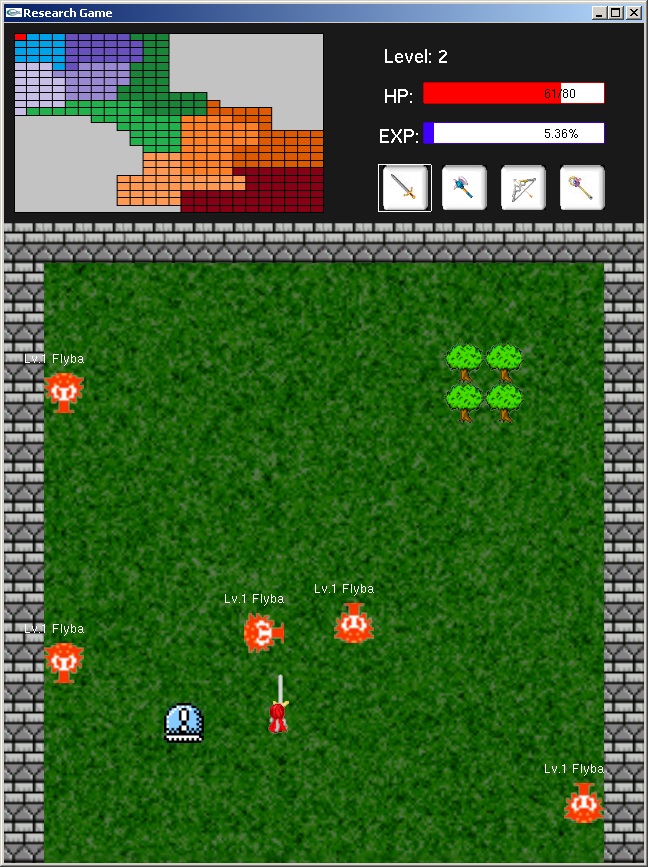
Oct. 2010 - "Attack of the Robots". Graduate Research Assistant project. Built
using Lua. Remake of classical AI game,
Attack of the Robots.
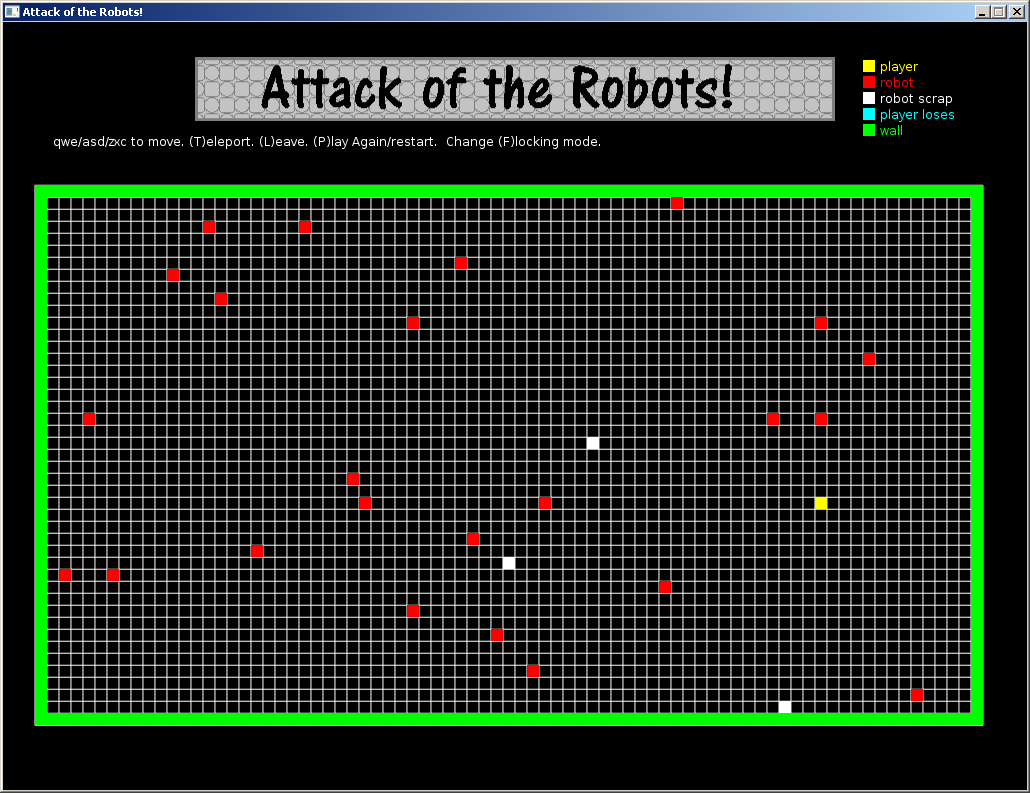
Oct. 2010 - "Grand Theft Wumpus". Graduate Research Assistant project. Built using Lua. Remake of
classical AI game, Hunt the Wumpus.
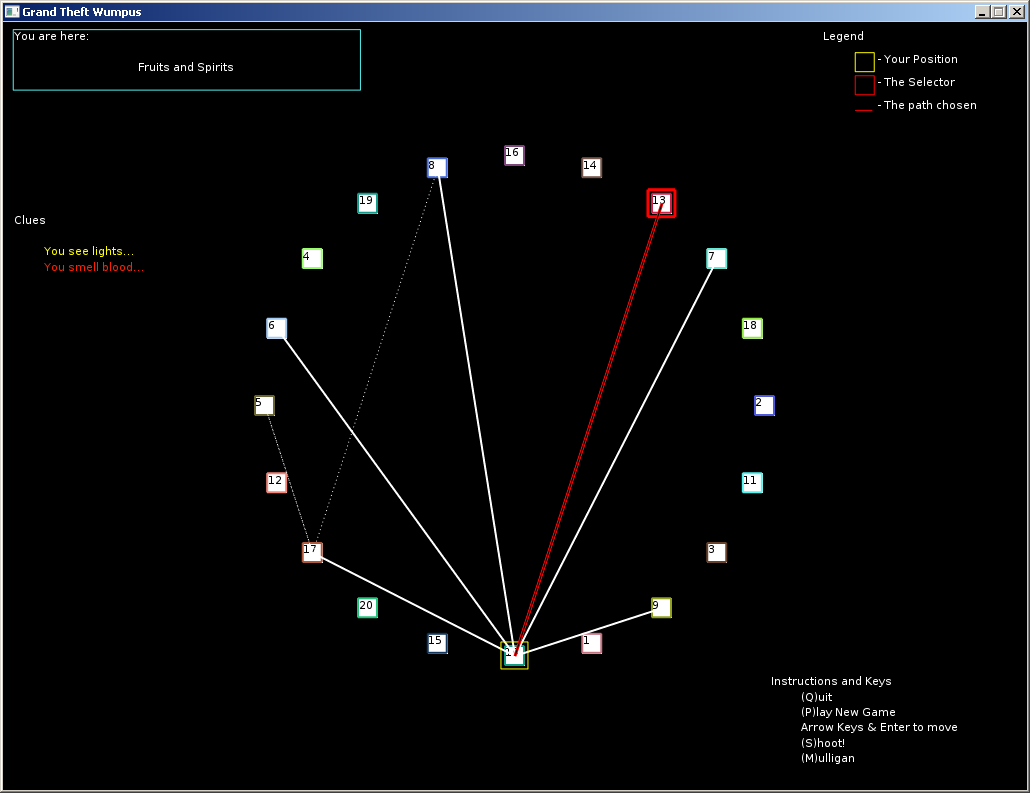
Nov. 2010 - "Evolution". Graduate Research Assistant project. Built using Lua. A
simulation of (simple traited) life in an evolutionary context of survival of the fittest.

Mar. 2011 - "AiMazed2D". Self Research project for West Virginia University. Built
using Lua.
Features purely random generation of dungeon-styled mazes, with
an automatic AI agent that can "solve" the maze by finding first a key,
then the exit.
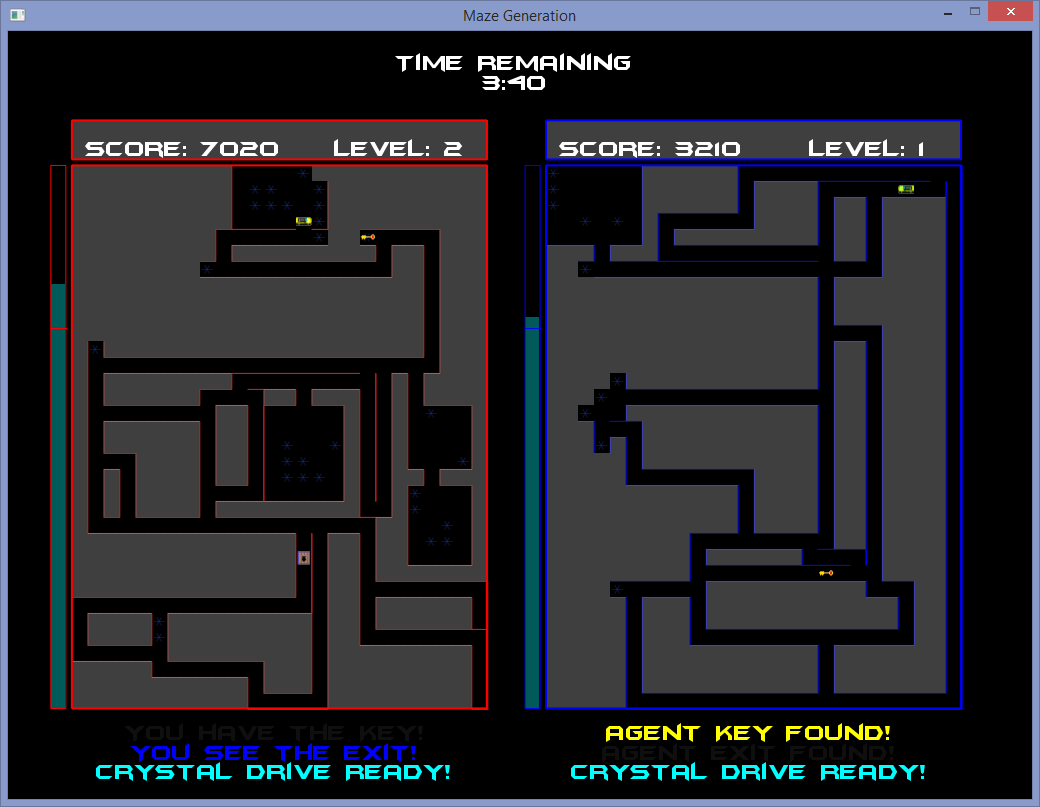
Jan. 2012 - "Qubey's Deep Dungeon". Self Research project for West Virginia University. Built using Java and web-hosting technology from Amazon
(no longer hosted due to pricing). Remake of AiMazed2D with
upgraded graphics featuring corroboration with professional artists
(musical and graphical).

Aug. 2012 - "untitled". Self research project. An
unfinished test with HTML5 using Javascript, to develop a simple html
page with a character and a map to walk within.
Feb. 2013 - "Pysteroids". Class project for West Virginia University. Built using Python;
remake of classical game, Asteroids. Features beautiful particle
systems and extremely simple vector graphics, including a
non-disconnect interface - the player controls their ship at all times,
even to make menu-type decisions.
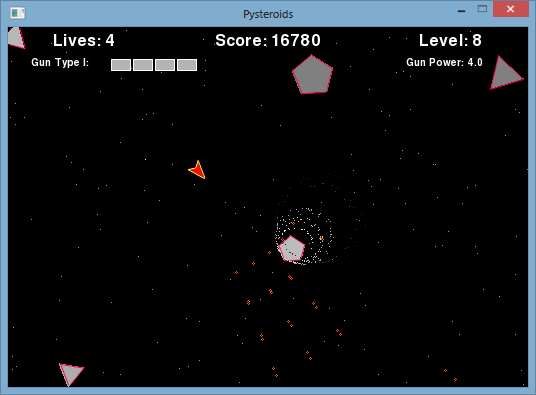
Apr. 2013 - "Pyranos Treasure". Class project for West Virginia University. Built
using Inform, presented in an html web page. This game is a work in interactive fiction, featuring a small puzzle-world.
May.
2013 - "Flight of the Goeben". Class project for West Virginia
University. Worked closely with a client to deliver at least, an
early prototype defined by extensive documentation for further
directions. Built using Java.
Aug. 2013 - "JMOO". Self Research
project for West Virginia University." Built using Python. A framework and tools for comparison
of algorithms for multi-objective optimization.
Dec. 2014 - "Lights-Out". Self interest
game project." Built using Java. Lights Out is a game where you must aim to put out all
the lights by pressing adjacent buttons.
Dec. 2014 - "Hangman". Self interest
game project." Built using Java. Hangman is a game where you must guess the word in a
limited number of tries.
Sept 2015 - "LoadIQ Disaggregation".
Proprietary work on disaggregation, a highly intelligent classification technique for analyzing energy usage.
Built using Python/Django.
August 2016 - "Django JMOO".
An extension of the JMOO project from 2013 to bring JMOO more towards the front-end and into a web browser. Python.
September 2016 - "Matching Game".
A memory matching game implementation in Java.
Strategy Guides
January 2012 - "Dragon Quest V (SNES)".
A partially(60%, missing some walkthrough and appendices) complete walkthrough and strategy guide complete with appendixes and artful design. Microsoft Word.
April 2012 - "Final Fantasy Mystic Quest (SNES)".
A mostly (~95%, missing a finished bestiary) complete walkthrough and strategy guide complete with appendixes and artful design. Microsoft Word.
Please use the menu above to navigate.






